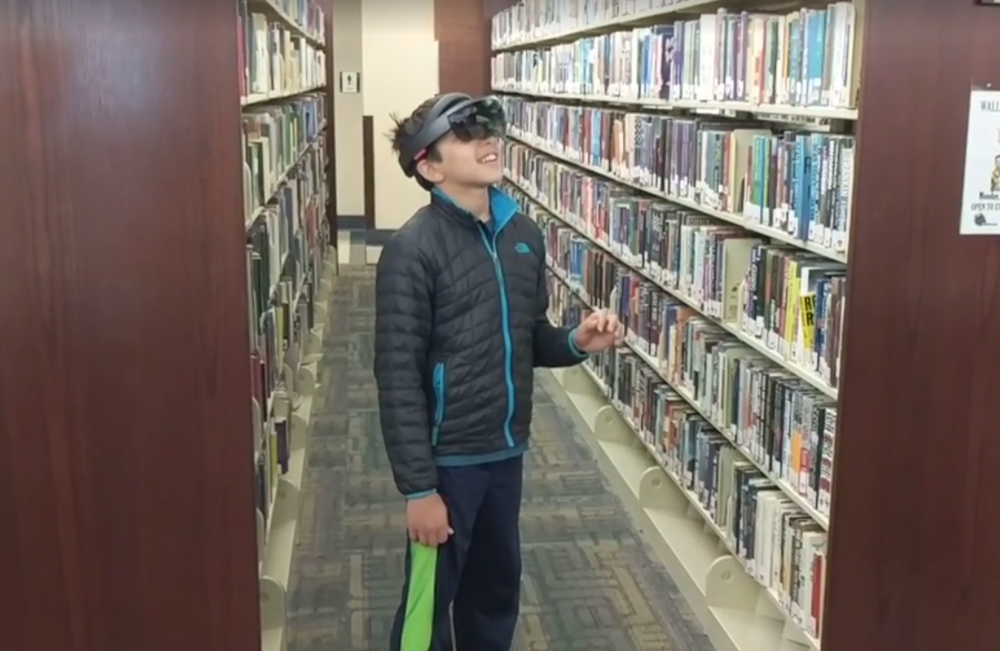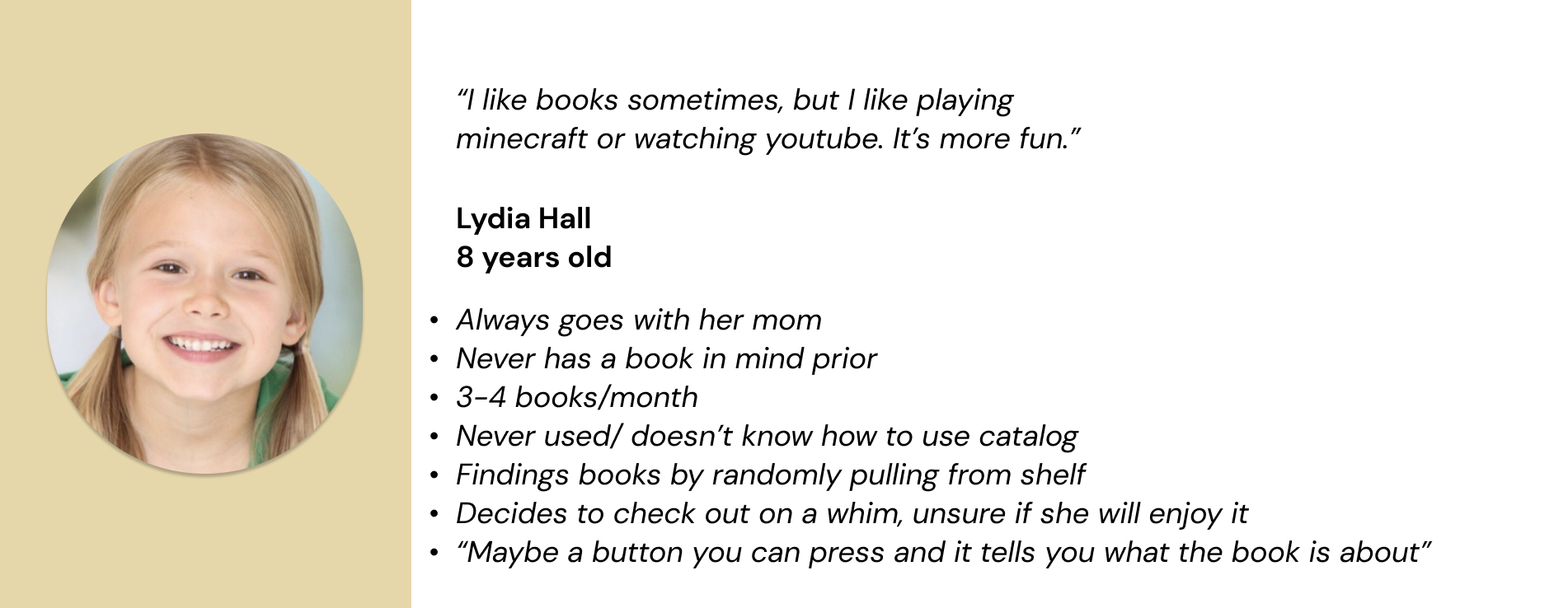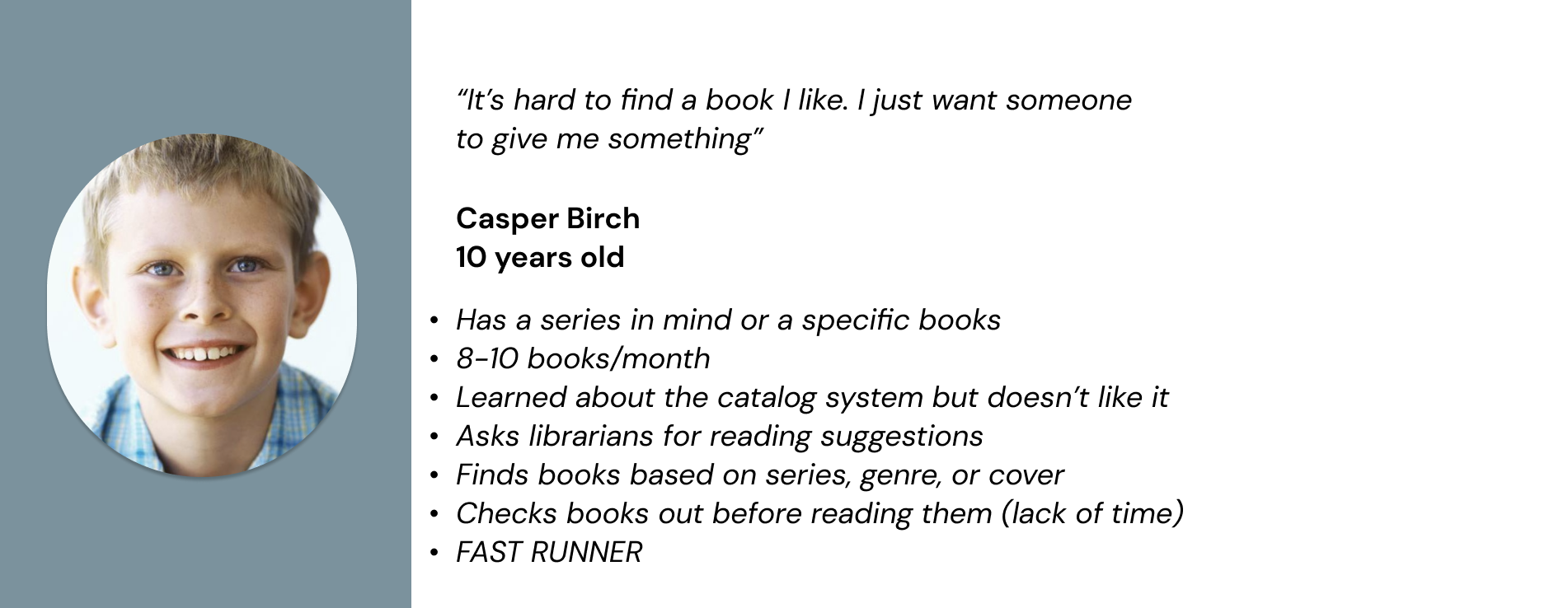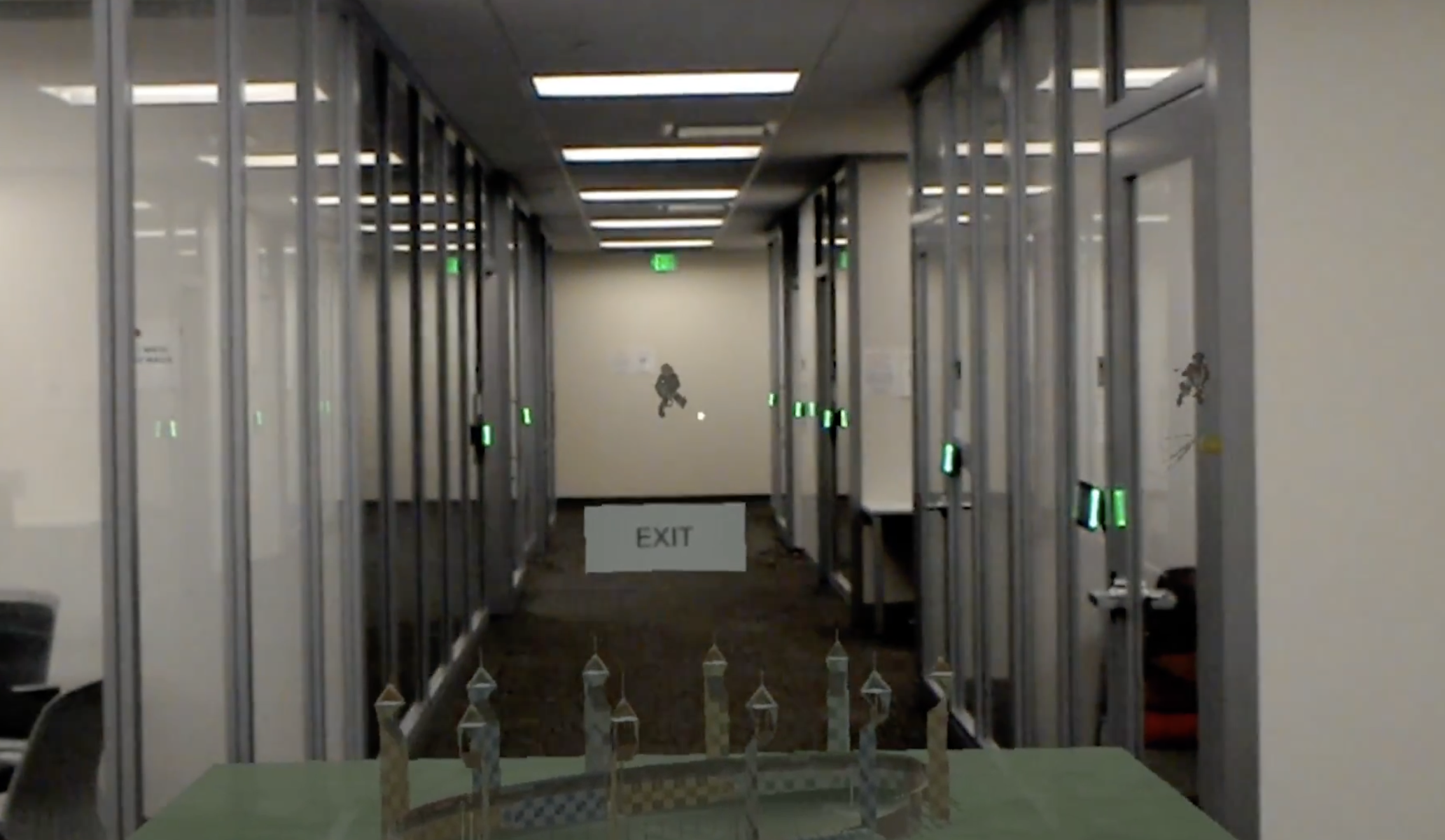Augmented Reality Experience
This project is about creating a proof of concept, and exploration into solving for the “4th grade slump” and increasing children’s interest in continued learning and reading through the use of AR technology and service design.
The Vision
The “fourth-grade slump” is a critical period of learning transition, where the academic curriculum shifts from learning to read to reading to learn. This causes school-aged children to feel overwhelmed and disengage with reading. It is often unaddressed, which can lead to falling behind and ultimately dropping out of school.
I utilized the AR capabilities of Microsoft’s Hololens to design a proof of concept to address this issue.
The solution is an AR guided experience that is registered to an individual’s library card. They can check it out and sign in. Their account will take note of their reading history, demographic, interests and provide them with reading recommendations. Once a book is initially chosen, an animation is played to lead users to the location of the book and then scanning a code which will play a short trailer.
For example, if a Harry Potter novel is chosen, a snitch might appear and fly to where the book is located. Once the book is located and scanned, a short scene of a Quidditch match will appear.
Success looks like school-aged children feeling excited and wanting to find the next book to read.
My Role & Responsibilities
As a UX designer within a self-led team, I helped my team strategize and identified areas of exploration.
I led user research with school age children, ideation, and ‘Wizard of Oz’ prototyping.
The Challenges
The biggest challenges revolved around the target audience of school-aged children (ages 8-12) and how to integrate the service into the greater library ecosystem.
How can I understand what are the causes of the disinterest and disengagement in reading?
Will school-age children understand the concept and will it be usable?
How do I seamlessly integrate this service into the library’s ecosystem and customer journey?
What are the design considerations for this target demographic?
My Design Approach
Learning & Understanding
I wanted to take a holistic approach when understanding the scope and users. I spent some time at the local library, taking observations and identifying the customer journey. I not only spoke with school-age children, but also their parents and the librarians to better understand the entire ecosystem.
Ideating & Innovating
After learning from customers and understanding the ecosystem, I led ideation sessions that aimed to solve our problem statements.
Designing & Validating
My team lacked the knowledge and expertise to fully create a realistic prototype, but we circumvent that by conducting ‘Wizard of Oz’ testing. The critical goal was to test the concept with children and gauge their interest and ability to complete the tasks.
Relearning & Reiterating
Once we were able to validate the concepts, we were able to create a simple proof of concept with the help of Unity & Cinema 3D.
Research
Interviewing school-age children was a first. There were a lot of implications and preparation needed beforehand. Many parents initially expressed concerns about the device’s capabilities, and naturally if it was harmful.
I created an informational brochure and consent forms for the team, which alleviated many of the parent’s concerns and allowed us to approach their 8-12 years with an unusual device.
Initial Research
The goal of the initial research was for us to understand the users, their guardians, and the library staff. This was to test the water and see how the affect groups of users would feel.
We brought along the Hololens as a visual aid and for demonstration purposes.
A snippet of some of the questions asked
What is your favorite book that you read this year? What did you like about it?
How do you usually pick a book?
What kind of things are you looking for on the cover?
Do you have a favorite type of book?
Did you get any help from anyone?
What makes you not want to keep the book?
What do you think could make it easier for you and your friends to find a new and exciting book?
It wasn’t easy to get answers
Many of my participants were easily distracted. They either didn’t quite understand what was asked of them or they would go on long tangents. Other times they would just run off, and we ended up playing a quick game of hide and seek.
Eventually, I was able to get some answers. Here are some examples:
“I watched The Hunger Games movie and it made me want to read [the books], because I want to know what the characters are thinking.”
“Reading is fun when it’s about something I like to learn about.”
“There should be a button that says what the book is about.”
From this session, it was enough to generate a few re-occuring themes from the 8 participants.
Although there were many sub-themes, there were three main themes that seemed to resonance with the decision making process when deciding if a book is worth reading.
The three main themes
Pop Culture
Movies, Toys, Shows, Games, Friends & Family
Interest & Hobbies
Fairies, Fairytales, Minecraft, Astronomy, & Hippos
Preview
Reading the summaries on the back cover was insufficient.
I also created personas based on our interactions, observations, and interviews.
These artifacts helped to generate ideas and provide rationale for why we wanted to pursue a certain direction over the other.
Design
This is my first time designing for AR. Since this was uncharted territory, I began with what I know.
I brainstormed an experienced base on the research findings that I learned.
I roughly mapped out the experience and flow.
I started with what I was familiar with, and created a mobile UI.
I translated the mobile UI into what an AR UI might look like.
It was easy enough to pull up an image on the hololens and see it within context, however actually making it interactive was difficult. So in order to test the designs, I suggested we give Wizard of Oz testing a try.
Children were quick to pick up on the concept. There was a degree of play-pretend and usage of imagination that really resonated with them and made them excited about this possibility. Which was a success for the criteria of this project.
To further solidify the proof of concept mantra, we included paper cut outs in addition to the AR UI to help sell the idea.
Finally, we went into Cinema 3D and Unity and found available assets to try to create a scene.
Impacts & Insights
This project was unique in the sense that I worked with AR technology. There were several constraints that needed creative problem solving to overcome. The target audience of school-aged children also posed special considerations one might not have thought of for regular experiences.
A lot of these takeways helped to solidify my own experiences as a designer and to be more mindful of experiences across different ages of users.
Although this was just a proof of concept, it’s interesting to think about the next steps. The major barriers are cost to implement, liability, and the technical effort of creating a small scene for the hundreds of thousands of books out there.

















